And at 34, he was identified as a prodigy within International Harvester’s (IH”s) headquarters. But after 13 years with the OEM, he left a promising and impactful career to join the dealers he’d coached during his blockman days.
Despite an earlier than desired exit, Wallem is a Hall of Famer not just for his pioneering advancements in technology and best business practices but for what he did to help other dealers survive.
His peers recall an outstanding leader, manager and communicator who ushered a new era of business metrics into the industry, long before Deere or Caterpillar earned world-class status in this area. In addition to championing the XL program for IH dealers – which Mike Silberhorn, retired IH territory manager and Cub Cadet executive, says were the only thing that saved many dealers in the 1980s, he was an innovator in leasing/rental and shared the knowledge and economics of the practice with other dealers.
His leadership helped other dealers survive by prepping them for the business smarts necessary to weather the storm ahead. True, his business didn’t survive the crippling crises of the 1980s, but such is often the outcome of the pioneer.
The Rockford, Ill.-based Wallem is now a book writer who has visited Lessiter Media offices several times. In fact he participated in a special visit to Racine, Wis., to meet one-on-one with Case IH executive Scott Harris, 30-some years after the 1985 merger. And he’s as dialed in to the industry of 2024 as full-time dealer-principals half his age.
The son of a dairy farmer in Ransom, Ill., Wallem leveraged a high school program to work as an apprentice mechanic at the local IH dealership. Later, while studying ag mechanization at the Univ. of Illinois, he worked a summer as an in-field salesman for the same dealer and the following year, interned at the IH district office.
Following graduation and military service, he landed in 1958 as an assistant zone manager for IH in Sterling. Three months later, he moved to Madison, Wis., as zone manager, and then to sales promotion supervisor. In 1962, Wallem went to Peoria, Ill., as the youngest sales manager in the country, exposing him to the best and the worst of dealerships, and learning how to deal with problems. In 1964, he moved to the IH general office as product supervisor.
Back in those days, OEMs invested deeply in their staff’s know-how. “I went into a General Management Training (GMT) program, in which a team of 20 did nothing for a year but visit locations throughout the country for IH trucks, farm equipment and construction equipment, learning everything there was to know about the company and its dealers.”
In 1966, part-way through the GMT program, IH executive Brooks McCormick asked Wallem to serve overseas as global export manager, again the youngest in the company. The job gave him oversight of the IH branches in Beirut, Brussels, Singapore and Lima, and took him to 52 countries.
But the travel was too much. Wallem would be overseas for 4 weeks at a time. “My kids were 11 and 7, and I felt like a stranger to them,” recalls Wallem, who was second in command for IH Great Britain and expected to eventually take over. The family was scheduled to move to England in July 1968, but Wallem realized the travel would still keep him from the family.
On a flight from Paris to Chicago, he concluded that he’d no longer raise his young family this way. “I decided to quit after 13 years and become a dealer instead. He’d spent the flight thinking about the 21 dealers he oversaw, and admired, in Wisconsin in the late 1950s. They had the freedom to be home every night, decide who they wanted as employees and appeared to be doing better financially than the company men."
The move surprised his wife, Joan, who’d been getting prepared for life abroad. At just 34 years old, many thought Wallem was “absolutely stupid” for jumping off a fast-tracked executive career path.
Back home in suburban Chicago, Wallem began looking for his next move. He didn’t have much to invest, but IH had a Co-Dealer program where they help finance a dealer-principal and become a managing partner.
An old boss at IH informed him of a struggling dealership in Belvidere, Ill., and Wallem was encouraged to buy the bankrupt dealership, which he did in January1970.
“The Co-Dealer program was the only way I could become a dealer. I borrowed $5,000 from both my father-in-law and brother-in-law and put up $10,000 of my own and IH put up the rest.”
The truck business helped return the store to solid ground. “Between trucks and farm equipment, we were able to do a lot of business and we were the second largest in the state. Another year we were the largest dealer in parts sales. The truck business was helpful to get us through the bad years.”
In 1974, Wallem doubled the size of the facility in Belvidere.
Leo Johnson, of Wisconsin’s Johnson Tractor, recalls the emphasis on the XL Dealer Program in 1978 and the articles, brochures, videos and photos of Wallem’s dealership and salespeople. “He was deep into dealer metrics before any other dealer was and was the poster boy for the XL program.”
Stan Lancaster, who’d been Wallem’s mentor as a zone manager, was key to the development of the XL program, though Wallem also helped advance the concept years earlier while overseeing global sales.
“There were so many weak points in our export company’s distributors that I constantly tried to get their businesses to upgrade and function like our best IH dealers did here in the states,” he explains. “That got Lancaster looking at how to improve the domestic dealers as well.”
Dale Simpson, a 40-year Case IH executive, says the XL Dealer Program focused on investments in the business, enlarging and improving the service shops, investing in tooling, people, training, parts departments, parts merchandising. “Oh, and this new thing called ‘computers’ and business management systems, parts management systems, etc."
SLIDESHOW: Inaugural Farm Equipment Hall of Fame Class of 2024: Paul Wallem, Wallem International & Central Sands International
Wallem recalls it was 1973 that an argument was being made about pushing smaller, less effective dealers to get better. “I was president of the National Dealer Council that year, and that was the subject of the council meetings the first couple of years. The XL program came after that,” he says.
“With his background with IH and being metrics driven,” recalls Johnson, "he applied a lot of what he'd learned on running a business to our dealer world. He said, ‘Here’s a set of metrics and if you attain success in these metrics, your dealership will survive and prosper. And if you don't, you probably won't.’ He understood that way before most anybody else.”
Silberhorn says IH had to “drag some dealers kicking and screaming into the modern era. Not all dealers like the programs that OEMs come up with, but this one was different. And Paul told other dealers to get behind it. He was a good spokesperson, he was a dealer advocate, and he was positive for the company."
Wallem walked the talk. “Paul embraced the program and ran with it and the requirements – the facilities, the signage, the inventory management, the parts inventory management, the service, the training and so on.”
Silberhorn says that many second- and third-generation dealers were still operating the same way their grandad did. “So, embracing that program and its computerized accounting and inventory management, succession plans, the service management was huge.”
Wallem was the first to jump all-in on the XL program and champion a much-needed program to get the network into the 20th century, says Silberhorn. “The XL group was considered the most well-managed and most forward-thinking dealers in the business.”
“I believed in the program very strongly and we were the first one in Illinois. Our employees were all recognized by the company as being XL employees. That's probably a highlight of the years with the dealership,” says Wallem, calling it the proudest moment of his career.
XL Impact
Pointing to sales standards, turns and computerization, Wallem says the XL dealerships were doing better in the late 1970s than IH itself was. “That's where IH fell short, too. They didn’t start the improvement processes quick enough. When things were going wrong, they'd fix one thing and something else would go wrong.”
While earning XL status wouldn't guarantee a future with IH, the byproducts of the program — a better business — gave dealers a fighting chance, says Silberhorn. “They didn't all survive, but the ones who did survive — at least in this area — were the ones who were on the XL program. If they didn’t modernize their structure, business and management, they weren’t going to survive.”
The movement toward business sophistication was going to come regardless, says Silberhorn, but Wallem fast-tracked an initiative that may have otherwise faced an uphill battle. “Paul had the leadership style and the ability to communicate with dealers, and the credibility with dealers that helped it succeed, to pull them along into it.”
Incidentally, Johnson Tractor was one of the last dealers to achieve XL status and the accompanying plaque, within months of the merger. Johnson remembers the Tenneco people saying, “Throw out all your awards, all your old awards. That was then, this is now. We’re in a new era.”
ProAg Program: Helping Dealers Present Farmers with 'What-If' Scenarios
In addition to the XL Dealer Program, Paul Wallem was one of an early handful of dealers who saw the value of, and became an advocate of, another IH innovation; the exclusive ProAg program,” says Case IH veteran Dale Simpson. “This is where I first became better acquainted with Paul and his dealership."
Mike Silberhorn, retired IH territory manager and eventually Cub Cadet executive, described the ProAg Program as a key tool for bringing farmers in to examine different scenarios for their operation. “Again, this is a computer in its infancy, and they could change things and build models of their farming operation. For instance, what would happen if they went from a combine with 4 rows to 6? Or what would happen if they went from a 4-row planter to 8 rows?
"You could put dollar figures on it. I was working with that program at the time, and I remember Paul diving right into that program, getting farmers to play with that program.”
Simpson recalls that Wallem was one of the dealers featured in the promotional movie IH put together back in 1975. He and his team brought many progressive farmers to the seminars and later became certified to offer the program at his dealership.
He adds there were many IH dealers, like Wallem’s operations, that didn’t survive the merger, just as some Case dealers were also eliminated.
Wallem’s Belvidere dealership was an IH showcase not only domestically but globally. With his Belvidere store’s proximity to O’Hare Airport, it would host visitors from nearly 30 nations over the years.
“We even had some large ag delegations from China. It was fun. Our employees gained a lot from visiting with them, hearing about their experiences.”
Incidentally, the FBI showed up after noticing visitors from Russia and China converging on Belvidere. “They came out and asked what we’d talked about. I said, ‘Hey, we were talking about agriculture and there was not much secret sharing going on about anything but agriculture."
Rental & Leasing
Another area that demonstrated Wallem’s inventiveness was in renting and leasing. He started his program with Green Giant after seeing Orhan “The Turk” Yirmibesh's success with his Badger Farm Store in Clinton, Wis.
“I did a great amount of leasing — rental may be the better word — when few dealers were doing it. People thought we were nuts; that it would get in the way of new sales.”
Wallem pointed to Green Giant, which was located in Belvidere, as an example. “We’d lease 15 tractors at a time until they got 200 hours each on them and then we’d bring them in. We’d clean them up and put them on the lot in the fall and get $3,000-4,000 out of them. We could beat everybody to pieces on a 200-hour tractor because there weren’t many out there.”
Words About Paul Wallem, ‘The Mentor’
By Dale Simpson, retired 40-year veteran of Case IH, December 2023
First, my disclaimer: Paul has been my mentor and friend since 1976. His son Jeff and I worked together at International Harvester (IH) for several years and our families continue to be good friends.
Unique Among His Dealer Peers
Although not exclusively unique, Paul as an IH dealer owner had valuable perspectives from growing up on a farm, working at a dealership and working for IH in an executive leadership position with international experience. The combined experiences served him well in managing and growing his business.
Relationship-based selling and value selling has been around for decades, but Paul certainly excelled at that. He exemplified this approach to sales. There were always competing dealers who would shoot a farmer a lower price, but Paul and his team focused on the long game, building solid relationships and providing the service, parts availability and follow-up growers appreciated.
Becoming a private pilot and investing in an airplane- see page 25 & 26 in his book Private Wings…My Life in Logbooks – explains how he utilized an airplane as a “business tool”— shuttling parts, taking customers up to scout their fields (many decades before drones), and going to see customers a long distance away and be home a few hours later when driving might require an overnight excursion (time management). That time saved could be spent with his wife and family.
What was he good at? The first thing that comes to mind is hiring and retaining good people to manage the parts, service and sales departments. He then gave them responsibility and authority while setting expectations and he got out of the way so they could run and grow their respective departments. He had several department managers that were with him for many years, which provided stability in the organization.
I also think he was good at looking for “unmet” needs that he could capitalize on. For example, farmers needed newer trucks on the farm. Farmers didn't want to pay for a brand new one but would purchase a good low-mile truck with some warranty remaining. Canning companies in the area needed trucks to move peas, sweet corn and other crops for only a couple of months. Paul had the IH Truck contract, so he met the needs of the canning companies with a short-term lease (those proceeds reduced the cost of the trucks) and these low-mileage units were returned, cleaned up, gone through by his shop technicians, and sold to those more price conscious farmers.
How he discovered these un-met or unfilled needs was a key to his success and building relationships — he spent a lot of time outside of his store, meeting existing customers and farmers that he didn't yet have as a customer, and talking to them about their business and plans, which led to discovering similar opportunities.
Another example was taking on the Steiger tractor contract to fill the high horsepower and operator comfort requirements of his customers, which couldn't be met by an IH tractor at the time.
Also, by “investing in the business” for the future growth opportunities that were coming with larger farms, larger equipment and greater capital and management requirements.
See page Chapter 15 beginning on page 115 in Successes and Industry Firsts IH 1940-1980 by Paul Wallem.
Paul got on the bandwagon early with the XL Dealer Program. Making investments in the business, enlarging and improving the service shops, investing in tooling, people, training, parts departments, parts merchandising, and this new thing called “computers” and business management systems, parts management systems, etc.
He also was one of an early handful of dealers who saw the value of, and became an advocate of, another IH innovation; the exclusive Pro-AG program. This is where I first became better acquainted with Paul and his dealership. See pages 116 – 122 of “Successes and Industry Firsts” IH, 1940-1980 by Paul Wallem, for more details. Paul was one of the dealers featured in the promotional movie IH put together back in 1975, and he and his team brought many progressive farmers to the seminars, and later became certified to offer the program at his dealership.
“Diversify your investments” is something you hear financial planners recommend today. Paul utilized this same strategy in his business planning. His original dealership in norther Illinois focused on cash crops of corn and soybeans , along with canning crops, and dairy and other livestock. His second dealership in the “Central Sands” area near Plainfield, Wis., was into cash and potatoes and the canning crops were made possible by center pivot irrigation systems that he had the franchise for.
He also had had a consumer “outdoor power” equipment location in Rockford, Ill., that sold and serviced Cub Cadet riding mowers and Ski-Doo snowmobiles and accessories. It focused on the large non-farmer market opportunity in the Rockford metro and surrounding communities.
Paul is a strategic thinker — always looking forward, searching and talking to others to figure out what changes may be in store in agriculture, how that would affect his customers and what that would mean for his businesses.
His energy and enthusiasm level has always been high and focused on the task at hand.
He communicates very well and understands the value of open and often communications. He is succinct, to the point and easy to understand.
He didn't “micromanage” or second guess his people. If something went wrong, he’d get folks together to share and communicate, understand what happened, make appropriate course corrections and move forward, and keep those “lessons learned” in mind when future decisions are being made.
He is always looking to learn and apply, and share.
He visibly celebrates the success of others and is humble in his demeanor.
He mentors and helps others grow and develop, and did so for many others by “passing it forward.”
He always has a smile, and a positive outlook. He might be having a bad day, but you would probably never know it.
Finally, coming full circle, Paul is a superb relationship builder: With his prospects and customers, his dealership teams, other community leaders (bankers/lenders/attorneys/local government/fair boards/soil and water conservation district/community colleges, 4-H, FFA, to name a few) other dealers, IH company leaders, and influencers like radio broadcasters Orion Samuelson and Max Armstrong. Paul has always been a strong advocate for agriculture. And continues to promote the history and legacy of International Harvester through his two books –The Breakup and Success and Industry Firsts.
And I certainly appreciate his mentorship and friendship that has grown over the years.
It succeeded because of Wallem and his team’s diligence in the clean-ups. “I had one man who did nothing but detail those tractors to look like new again, even paint the tires,” says Wallem, pointing out the poor state of half-million dollar combines he sees on dealers’ lots today.
“If you completely restored them to look like new again, you could get any price you wanted. So many of our competitors would rent or do a demo and just park it on the lot and it’d sit there forever because it was dirty. The difference was making them look brand new.”
He also leveraged the concept on his trucks. “We were the biggest grain truck dealer in the Midwest. We’d rent 20 of them each year to the canneries, and then sell them in the fall. We’d never carry them a second year. That was our most profitable thing and gave us a huge amount of volume.
“More than anything, leasing and rental is what allowed us to grow as big as we were and profitable — up until the bad years. It worked like a charm.”
A 2nd Dealership
Wallem’s path to his second store arrived via an unusual opportunity — center pivot irrigation. It was very uncommon in the Midwest for a machinery dealer to go all-in on irrigation, but Wallem seized the chance.
A farmer on sandy ground in Belvidere asked if Wallem could find him a center pivot system. He reached out to Zimmatic and secured the pivots.
That transaction led to a call from Zimmatic asking if he’d consider opening a dealership in Plainfield, Wis., to help a farmer put 2,100 acres of land that had never been farmed and who needed the water to make it happen.
“I took the dealership up there in 1978, rented a gas station for an office, and helped sell 18 center pivots. About the same time, IH asked me to take over the franchise there and then we added Butler to what became Central Sands International.”
Former IH export colleague Bill Kleckner took a class B ownership stake, ending up with the operation when Wallem exited the business in 1987.
Fierce Inline Competition
Newcomers to the industry would be surprised by the amount of inline competition that existed in the 1970s.
“Inline competition was staggering at the time,” notes Johnson, who had joined his father’s then-named Clinton Implement & Hatchery. In 1978, “We were 20 miles from Paul, and the Illinois-Wisconsin border separated us, but that didn't matter. Guys from Illinois would come up and buy from us, and I'm sure that we lost a few deals to Paul over the years.
Shortly after Wallem opened his store, Andy Anderson of Harvard, Ill.-based A.A. Anderson showed up and asked what in the world he was doing with a dealership in Belvidere — his territory. “I said, ‘Andy, there must be way we can stay out of each other’s hair. And that did or didn't work very well.”
So there were a few blood enemies in those competitive days, and even face-to-face sit-downs to work things out, or at least intimidate.
Wallem recalls a call from fellow IH competitor Jim Walker of Rochelle, Ill., about arranging a sit-down meeting in Clinton, Wis. The agenda was about a young whippersnapper by the name of Leo Johnson, who Walker said was “in my hair.”
The pair met with Johnson’s boss, Bruce Lucas about the young Johnson venturing too far south and into their AOR. Lucas didn’t give an inch. Wallem says the meeting ended with Walker saying, “My god, if he gets anywhere near Rochelle, Ill., I’ll send him home with his tail between his legs.” (Johnson was told to “keep it up,” and ironically, Johnson ended up with the bankrupt Rochelle location in 2006).
Wallem and Walker would become fierce competitors as well, even enemies. But they did patch up their friendship 10 years ago before Walker passed.
A Decade of Success
Wallem got off to a good start in what would become a roaring 1970s for ag. “In 1974, after $11.5 bushel soybeans, we bought our house — it was a great year.”
His peak year was 1979. “It was just an awesome year because the Axial Flow combine was brand new. We sold more Axial Flow combines than any dealer in Illinois; 12 in the month of October alone. And then the 400 Cyclo air planter was doing great; we had 30 that spring that went out.
“That was an exciting time. Everything looked great. We were so busy and firing on all cylinders — sales, parts, service, we couldn’t keep up.”
But things would start to change in December 1979, starting with the IH strike. “Everything went from roses to ‘down the tubes’ for a coming year with no parts flow. The company started having all kinds of problems in 1980 and obviously kept on having problems.”
Worst of Times
"None of us guessed that the IH strike, which Archie McCardle started in the fall of 1979, would last 6 months and basically bust the company and a lot of us," Wallem recalls.
IH didn’t help matters. “The company kept the factories going full blast from November 1979 until April 1980, and the inventory buildup hit dealers hard. Sales started plummeting in January 1980 when interest rates soared past 20%. President Carter’s grain embargo with Russia hit, inflation pushed farmland prices sky-high and IH just kept building more equipment.
“Once the strike was over, IH pushed us to buy more wholegoods because the company couldn’t afford to finance them. Over the next 4 years, with new tractors forced on me, I sold some at a $6,000 loss just to get rid of them. That was a huge IH mistake, and it hurt dealers for a long time.”
Interest rates were the other hammer that fell, Wallem says. “Running a dealership in the early 1980s was about managing how much you could lose. I had $1.5 million in unsold inventory. I was a director at the Belvedere Bank, and bank directors had to pay 1% above prime rate for loans. So I was paying 22% interest on inventory that we couldn’t sell. That’s what ultimately busted me.”
For More Information on Hall of Famer Paul Wallem
For a complete archive of Farm Equipment articles on Paul Wallem, click here!
As conditions worsened, Wallem knew his fate rested in the service department, and kept his 17 techs — more than half of his staff — employed. We were living on service and getting rid of our techs would’ve meant cutting our own throat. I hated to let them go because they didn’t have other jobs to look forward to anywhere else.”
Wallem recalls the weekly “Thursday night reviews” of the bankruptcy filings, and a time when the dealership would lose $10,000-$15,000 a month on bankruptcies from farmers that wiped out accounts receivables; mainly in the service department where Wallem pinned his hopes.
The bankruptcies started in 1984 and accelerated through 1985. “When farmers came into my office and closed the door, I knew what was coming next. A good friend, a dairy farmer, shut the door, started to cry and said, ‘This is going to cost you, but I’m filing bankruptcy.’ And he had about $5,000 in unpaid shop bills. Those were nasty times.”
He recalls a dealer lunch meeting in Decatur. "A dealer said, ‘I always wake up at 3 a.m. worrying.’ Others said the same thing, so I commented that we might as well have dealer meetings from now on at 3 a.m. — since we're all awake.”
After selling a dozen new combines in October 1979 alone, Wallem says, “We only sold 3 new combines from 1980 till 1986 when I sold out — that’s 3 in 6 years.
“We ultimately ended up having equipment that was built in 1979-80 four years later and paying interest on it. It was equipment that we shouldn't have ever had; equipment that the IH shouldn’t have built during the strike.” Wallem recalls that in 1984, he paid $195,000 in interest rates on equipment that he couldn’t move.
In 1979, there were 11,000 farm equipment dealers of all brands. By 1986 only 5,800 remained, Wallem says. “I vividly remember the suicides among dealerships, including three IH dealers during those years.”
The Exit
The Case-IH merger announcement in November 1984 was when Wallem started to lose his enthusiasm for the business. With the merger, he faced new competition in dire times, including a nearby Case Industrial store that suddenly had access to all his customers’ needed ag parts — that it was selling well below Wallem’s price book.
With the additional pressure he had as a bank director and with floorplan inventory that was “killing him,” he says he had to do something to stop the bleeding and attempted to sell both operations, yet no buyers existed.
Wallem sold the Belvidere store to the Weeks farm family, which expected to obtain additional operating capital. But the financing fell through and the store closed within the year. His partner at Central Sands picked up the loans and kept it going for a number of more years.
He exited the business in May 1986, 15 months after the Case IH merger was completed.
Life After the Dealership
Reflecting on his career, he cites how involved his entire family was in the dealership. There was his wife, Joan, his son Jeff who worked on the center pivot business, daughter Linda who ran parts in the summer, and son Steve who steam-cleaned the trade-ins. “They all worked in the business at various times, and rode to work in the morning with me. That’s why I was so happy to leave the export job.”
Like so many of his peers, Wallem had to find new life in areas outside of farm equipment. He became a certified financial planner and founded Wallem Associates, which his son Jeff later joined and purchased in 2012, and which currently manages 300 clients.
“To me, one of the major privileges of my life is to spend so much of it with my son in business. We were together twice. He left, went with IH, then quit to run the truck part of my dealership, and then went with Sundstrand. But then came back with me 20 years ago in the financial planning office.”
Wallem is well aware of the challenges of today’s farm equipment dealer. “In recent years, when I’ve seen dealer lots filled with $300,000 used combines, I’m glad I’m no longer a dealer,” he says. “The risk is too high when dealers carry expensive used equipment that can just sit and deteriorate.”
Wallem, who will turn 90 in March, faces another transition ahead, as he lost his wife of 67 years, Joan, in December.
But he remains in contact with dealers and reads Farm Equipment and its related content, commenting and asking focused questions that might elude even the most astute dealer-principals. He also writes a weekly column for Indiana newspaper Farm World which keeps him dialed into the industry and with deadline pressures. And he’s now working on his 6th book, which includes several titles on International Harvester, his piloting days, a novel and now a new book, called Drives that will include a foreword by his friend Max Armstrong.
He still loves the business and remains grateful for the experience — both good and bad. “It’s fun to enjoy your job in your life. My good friend, Orion Samuelson has said so many times on the air. ‘Find a job that you love doing. You'll never work a day in your life.’ And that’s so true.”

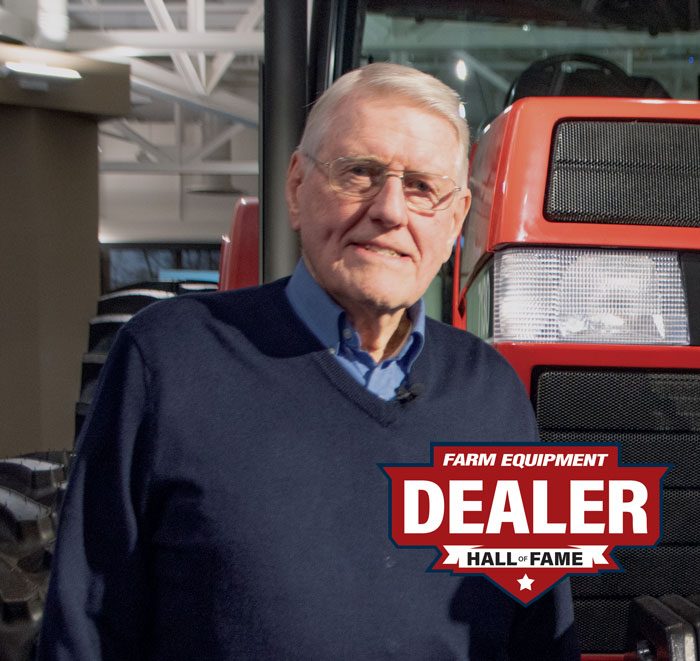

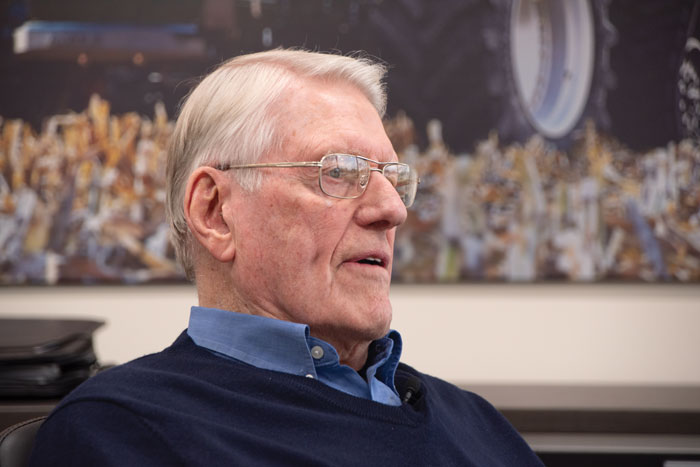
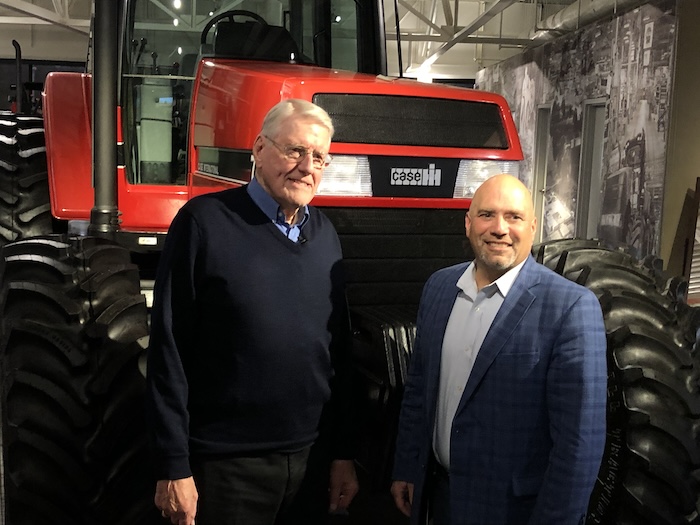
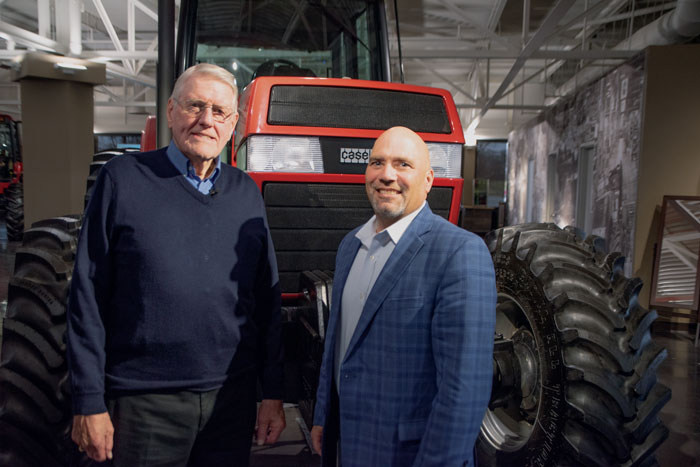
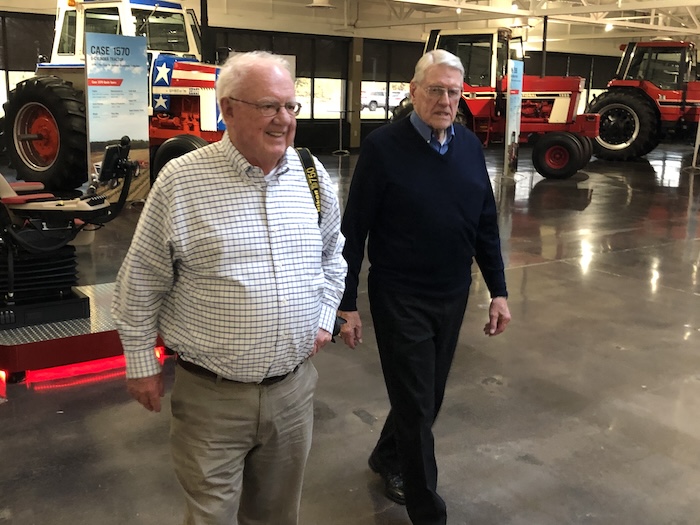




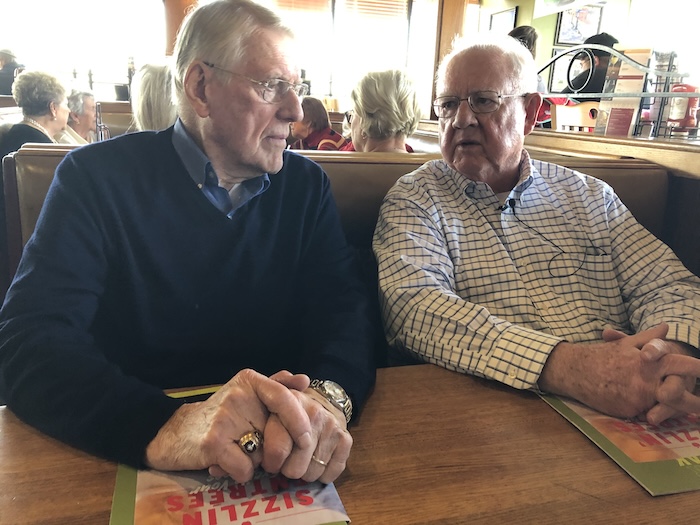








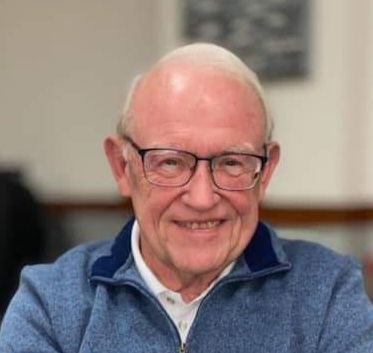
.jpg)






